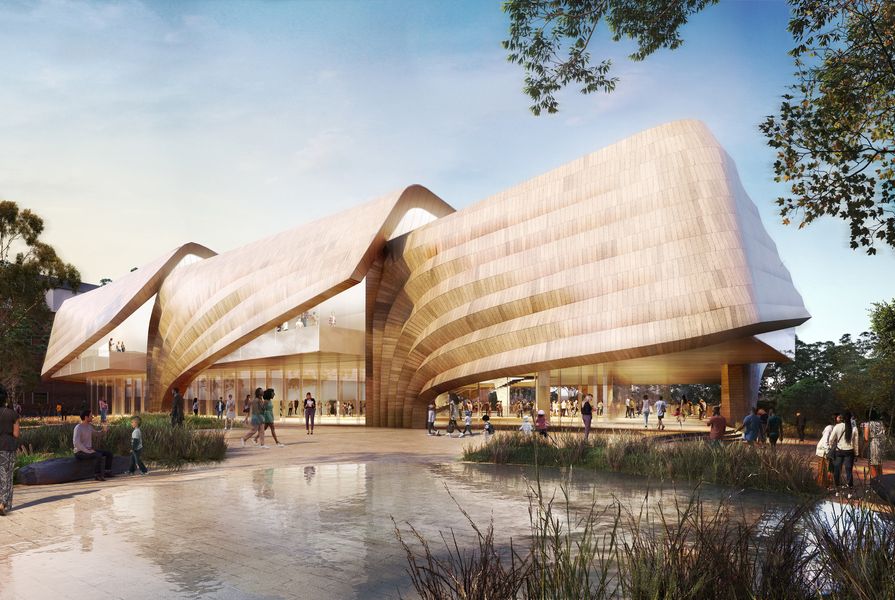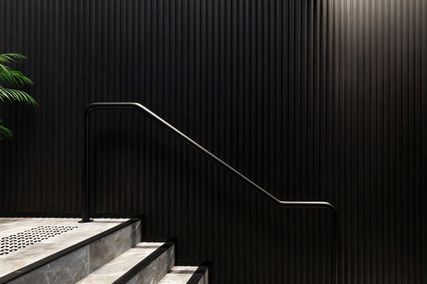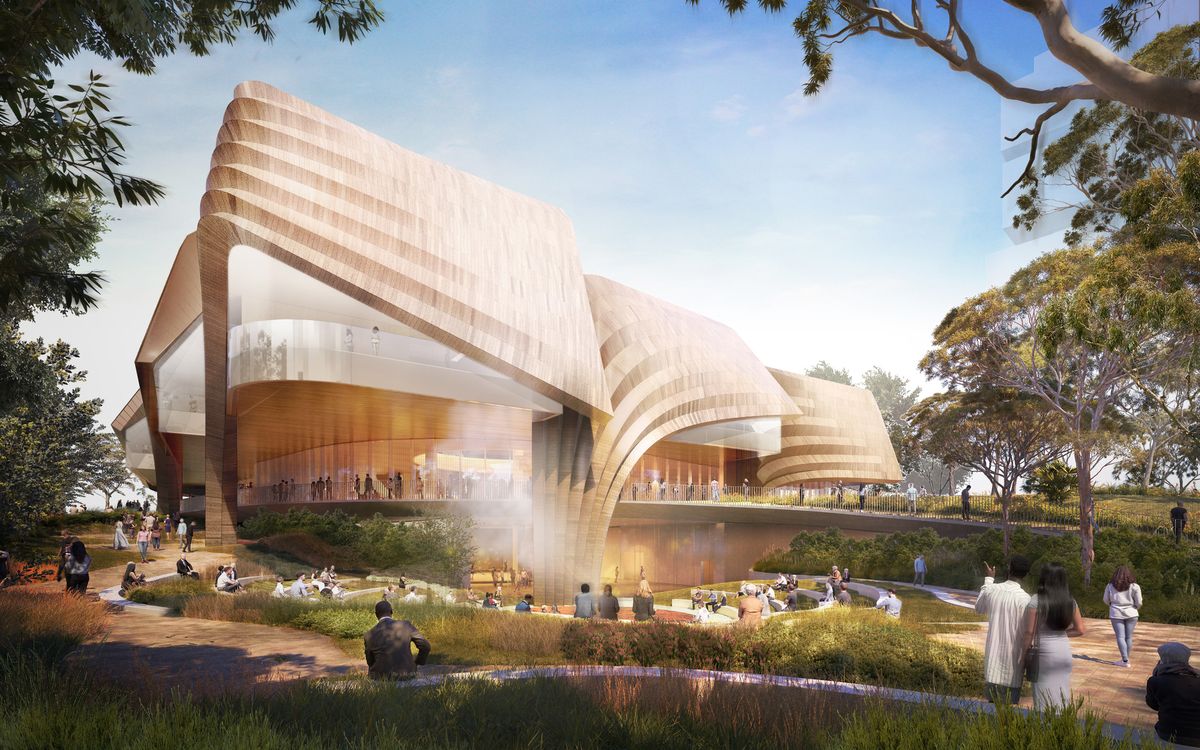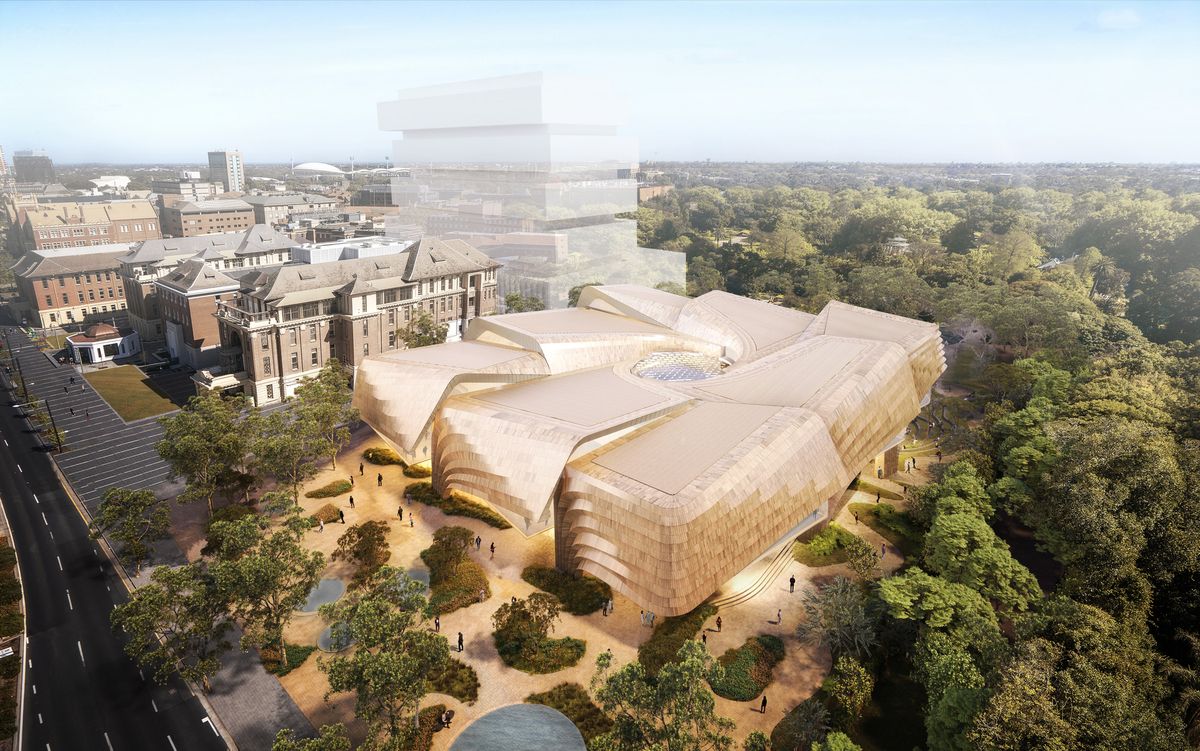Diller Scofidio and Renfro and Woods Bagot’s design for the Aboriginal Art and Cultures Centre (AACC) at the former Royal Adelaide Hospital site on Kaurna land has been submitted for planning assessment.
Concept designs for the Aboriginal Art and Cultures Centre depicting a series of basket-like forms were released in early 2021 and have been refined for the planning application.
Diller Scofidio and Renfro partner Charles Renfro said a deeper and wider engagement with the Aboriginal Reference Group had allowed them to embrace Aboriginal shared values and reference forms found in Aboriginal art and cultures.
“Wholly connected to the landscape, the design embeds the lower ground level into the site and includes an outdoor gallery cantilevered over the terraced landscape,” he said.
Refinements to the design aimed at creating a stronger connection to Country include making the feature gallery completely outdoors, and designing the building to “more decisively originate from the earth with columns that appear to grow from out of the ground.”
The Aboriginal Art and Cultures Centre by Diller Scofidio and Renfro and Woods Bagot.
Oculus is collaborating with Aboriginal landscape architect and visual artist Paul Herzich on project which will see a significant proportion of the site established with a combination of plants and vegetation, paving, walls, terracing, seating and a range of water features.
Interconnected pathways will wind around the building and flow into smaller, quiet spaces throughout the site to enable visitors to take time out from the city environment and immerse themselves in the landscape.
Woods Bagot principal Rosina Di Maria said the architects had felt a profound responsibility with this project.
“This project is a path to reconciliation, an important moment in setting the future for Aboriginal and non-Aboriginal people,” she said.
“We’re designing a vessel to hold – to nurture and care for – the stories of the world’s oldest and resilient, continuous culture on earth. The design must speak to the whole nation and especially Aboriginal and Torres Strait Islander peoples across Australia.”
Di Maria stressed the importance of collaboration with the Aboriginal Reference Group.
Led by AACC ambassador and community leader David Rathman, the reference group brings together people from a range of institutions and backgrounds. Its members include Jack Buckskin and Jessica Davies-Huynh, representing Kaurna people through the Kaurna Yerta Aboriginal Corporation; Karl Telfer, Tandanya National Aboriginal Cultural Institute; Sandy Miller, SA Museum Aboriginal Advisory Committee; Cara Kirkwood, Art Gallery of South Australia; Craig Ritchie, Australian Institute of Aboriginal and Torres Strait Islander Studies; and Kirstie Parker, Aboriginal Affairs and Reconciliation, Department of the Premier and Cabinet.
“The design team’s role has always been to listen to and translate the aspirations and ambitions of the ARG into a design response,” said Di Maria. “The architecture evokes a sense of welcome to all visitors – particularly First Nations peoples – and a connection to culture offered through the human experience.”
Diller Scofidio and Renfro and Woods Bagot initially won the Adelaide Contemporary design competition for an art gallery at the same site before a change in government saw the gallery proposal scrapped and replaced with a proposal for an Aboriginal Art and Culture Centre.



















